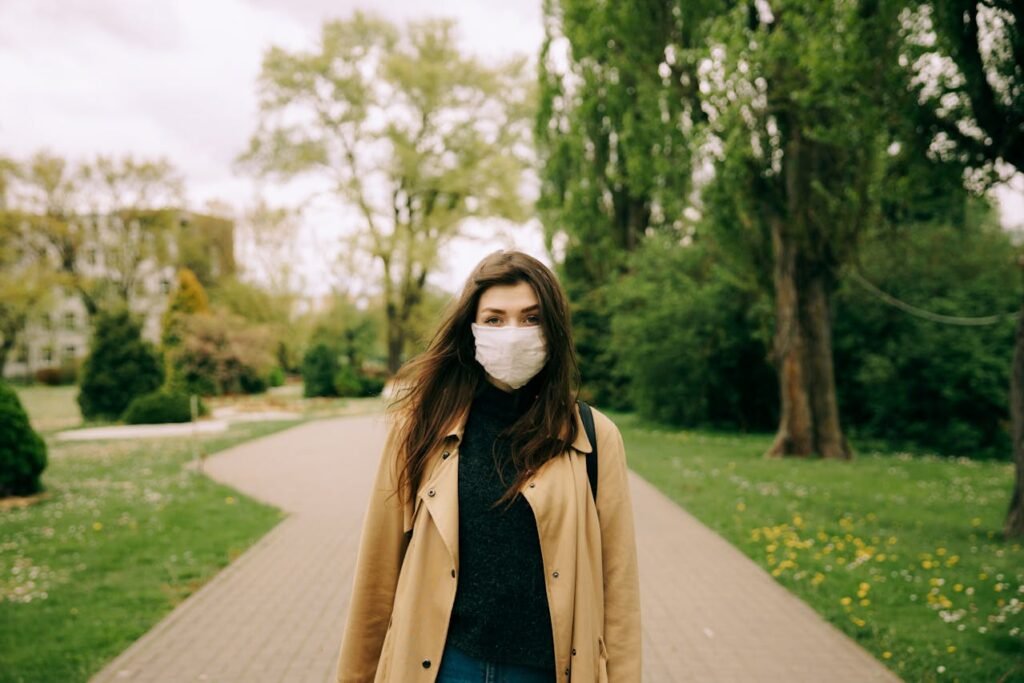In the wake of the global health crisis, many people are focusing on rebuilding their strength and well-being. Exercise after COVID-19 plays a vital part in this journey, helping to restore physical fitness and boost mental resilience. As we move forward in 2025, understanding how physical activity aids recovery can make a real difference. This article explores the benefits, simple routines, and tips for getting started safely. Drawing from recent studies, we’ll see why incorporating movement into daily life is essential for long-term health.
Why Exercise Matters in Post-Pandemic Times
The pandemic left many with lingering effects like fatigue and reduced stamina. Regular physical activity post-COVID helps combat these by improving cardiovascular health and strengthening muscles. Research shows that tailored exercise routines can mitigate symptoms such as weakness and breathlessness. For instance, starting with gentle movements rebuilds endurance without strain. It’s not just about the body; exercise boosts mood too, reducing feelings of isolation. By prioritising safe workouts after illness, individuals regain autonomy and vitality. Aim for consistency to see lasting improvements in energy levels and overall function.
Mental Health Benefits of Exercise After the Crisis
Lockdowns heightened stress and anxiety for countless people. Physical exercise for mental well-being post-pandemic acts as a natural remedy, releasing endorphins that elevate spirits. Studies indicate that moderate activity reduces depression symptoms during recovery phases. Engaging in outdoor walks or yoga sessions fosters mindfulness and eases emotional burdens. This approach is especially helpful for those facing long-term COVID effects on mood. By integrating daily movement to combat stress, you build resilience against future challenges. Remember, even short bursts of activity improve sleep quality, contributing to better psychological health overall.
Low-Impact Exercises for Gentle Recovery
For those easing back into fitness, low-impact workouts post-COVID are ideal to avoid overexertion. Options like walking in nature or swimming for rehabilitation provide benefits without joint stress. Try seated exercises at home, such as arm rows or toe lifts, to rebuild core strength gradually. These gentle routines for post-illness strength enhance flexibility and circulation. Evidence suggests cycling as a recovery tool supports heart health while being easy on the body. Focus on progressive activity plans to increase tolerance over time, ensuring a sustainable path to wellness.
Building Strength Through Tailored Routines
Customising your exercise plan after viral infection ensures safety and effectiveness. Begin with short sessions of 10-20 minutes to assess your limits. Incorporate strength training with body weight like squats or bridges to target key muscles. This methodical approach to fitness regain prevents setbacks. As per health guidelines, gradual increases in intensity help manage fatigue. Pair this with breathing exercises for lung recovery, promoting deeper oxygen intake. Such personalised recovery strategies lead to improved mobility and confidence in everyday tasks.
The Role of Nutrition in Supporting Exercise
Pairing exercise with balanced nutrition post-pandemic amplifies recovery. Foods rich in proteins and vitamins fuel muscle repair during workouts for health restoration. Hydration is crucial for maintaining energy during activity. Include anti-inflammatory foods like berries to aid joint health in exercise routines. This synergy enhances endurance building after illness. Avoid processed items to support immune function through movement. By nourishing your body, exercise becomes more effective in overcoming post-crisis lethargy.
Overcoming Common Barriers to Getting Active
Many face hurdles like low motivation when starting post-pandemic fitness journeys. Set realistic goals for daily movement to build habits. Home-based exercises without equipment remove excuses related to access. Combat fatigue with rest days integrated into your schedule. Seek community support for motivation through online groups. This helps sustain long-term activity commitment. Address fear of relapse by consulting professionals for guidance.

Exercise and Immune System Boost
Physical activity strengthens immunity post-COVID, reducing vulnerability to infections. Moderate routines enhance immune responses, as shown in recent analyses. Consistent movement improves circulation, aiding defence mechanisms. Opt for outdoor activities for vitamin D benefits, which support overall resilience. This natural way to fortify health is key in recovery phases.
Incorporating Mindfulness into Workouts
Blend mindful exercise for emotional recovery to address both body and mind. Practices like tai chi for stress relief promote calm during sessions. Yoga poses for mental clarity help process pandemic experiences. This holistic approach to well-being fosters inner peace alongside physical gains.
Tracking Progress in Your Recovery Journey
Monitor improvements from regular exercise using simple journals or apps. Note energy levels after workouts to gauge advancements. Celebrate small milestones in fitness to stay encouraged. This systematic tracking method ensures steady progress without overwhelm.
Community and Group Activities for Support
Join group exercises for social connection to combat isolation. Virtual classes post-crisis offer camaraderie from home. Local walking groups build friendships while moving. This communal aspect of recovery enhances enjoyment and adherence.
Adapting Exercises for Different Age Groups
Tailor activities for seniors post-pandemic with chair-based options. For youth, fun games to rebuild stamina work well. Family-oriented routines encourage participation across generations, making age-specific fitness plans inclusive.
Seasonal Tips for Outdoor Exercise
In winter, indoor alternatives to outdoor walks keep momentum. Summer allows light jogging for endurance. Adapt to weather for consistent seasonal activity, ensuring year-round benefits.
Tech Tools for Exercise Motivation
Use apps for guided workouts to structure sessions. Wearables tracking steps provide data-driven insights. This technology in recovery boosts engagement.
Hydration and Its Impact on Performance
Proper fluid intake during exercise prevents dehydration. It supports muscle function in routines, vital for sustained efforts.
Rest and Recovery Balance
Scheduled downtime after activity aids muscle repair. Listen to your body for optimal rest periods.
Professional Guidance for Safe Starts
Consult experts for personalised plans to avoid risks. This ensures supervised recovery paths.
FAQ
What are the best low-impact exercises for post-pandemic recovery?
Options include walking, swimming, and yoga. These gentle activities help rebuild strength without straining joints.pmc.ncbi.nlm.nih+1
How often should I exercise after recovering from COVID-19?
Aim for 3-5 sessions per week, each lasting 30-40 minutes, to maximise benefits like reduced anxiety.frontiersin+1
Can exercise improve mental health post-crisis?
Yes, it alleviates depression and stress by boosting endorphins and improving sleep.frontiersin+1
Is it safe to start exercising right after illness?
Begin slowly with professional advice to avoid overexertion and monitor symptoms.hse+1
How does exercise boost immunity after the pandemic?
Regular movement enhances circulation and immune responses, aiding overall resilience.behmedicalbulletin+1
- https://pmc.ncbi.nlm.nih.gov/articles/PMC8156194/
- https://pmc.ncbi.nlm.nih.gov/articles/PMC10582957/
- https://www.frontiersin.org/journals/psychology/articles/10.3389/fpsyg.2021.759987/full
- https://www.frontiersin.org/journals/public-health/articles/10.3389/fpubh.2025.1604185/full
- https://www2.hse.ie/conditions/covid19/recovery/exercise/
- https://www.healthline.com/health/fitness/how-to-return-to-exercise-after-covid
- https://behmedicalbulletin.org/articles/physiology-of-exercise-and-its-importance-during-covid-19-pandemic/BMB.galenos.2022.2022-03-027
- https://pmc.ncbi.nlm.nih.gov/articles/PMC8717035/
- https://pmc.ncbi.nlm.nih.gov/articles/PMC9180432/
- https://www.sciencedirect.com/science/article/pii/S266633762100024X
- https://www.nature.com/articles/s41598-023-42710-0
- https://www.youtube.com/watch?v=bK8uuiqyFM0
- https://www.sciencedirect.com/science/article/pii/S2405844023065477
- https://www.resultspt.com/blog/posts/low-impact-at-home-exercise
- https://www.news-medical.net/news/20221017/Physical-exercise-provides-positive-health-benefits-on-COVID-19-outcomes.aspx
- https://www.sciencedirect.com/science/article/pii/S2666337623000057
- https://olympics.com/ioc/news/sport-and-physical-activity-should-be-part-of-post-covid-19-recovery-plans-say-governments
- https://www.sciencedirect.com/science/article/pii/S0010440X25000185
- https://www.huffpost.com/entry/workouts-recovering-covid-19-exercise_l_60784334e4b089e3a2c80c2c
- https://wjbphs.com/sites/default/files/WJBPHS-2024-0315.pdf






